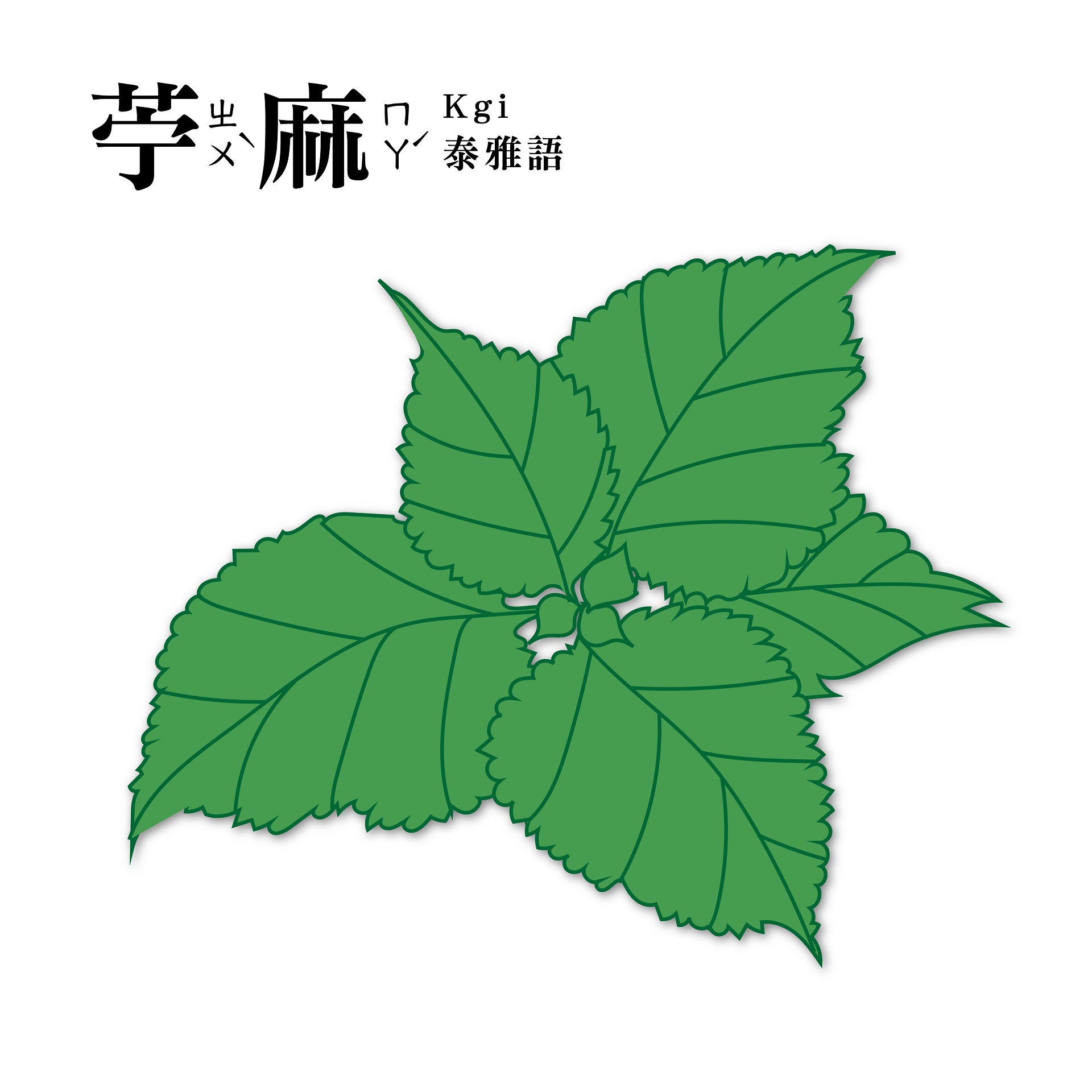date of issue:2021-06-16

苧麻 kgi(泰雅語)
苧麻是一種多年生的草本,高達2米左右。莖直立,分枝,葉面有柔毛,是原住民族織作服裝的主要材料,原住民族使用苧麻的時間,至現今尚無法考證確切的時間,但一般認為在數千年前,原住民在不同的時期移住台灣的同時,部分的族群便同時會攜帶原居地的植物進入島中
在尤瑪‧達陸老師的研究裡,苧麻全株循環生態模式,除了可運用在於服飾的織作材料,浸泡過苧麻纖維的浸泡液,還可利用於灌溉蔬果以及養殖魚類,苧麻桿被研磨成粉末後可用於雞舍鋪底,而苧麻桿與玉米澱粉結合,製成3D列印材料,苧麻葉在採收後曬乾可製作成飼料,苧麻根在經過四年的種植後則可運用於藥材。苧麻的整體循環運用也是發展部落循環經濟的重要經濟植物之一
Kgi (the Atayal word for Taiwan’s ramie plant of the Urticaceae family)
Kgi (ramie) is an herbal plant with a productive life span of up to 30 years. It grows upright, up to 2 meters tall, with soft hairy stems and leaves. Historically, in aboriginal cultures processed kgi ramie fibers have been an important material for weaving traditional costumes. Although it is impossible to know exactly when, it is widely believed kgi ramie was first brought to Taiwan over 1000 years ago, probably by different groups of people migrating from different places.
Currently going through a revival due to research by Yuma Taru and others, kgi ramie is being used in a wide variety of ways involving all parts of the plant and its life cycle. This includes, of course, as a fabric for weaving; as fertilizer/irrigant (water absorbing ramie fiber nutrients) for fruit, vegetable, and fish farming; grinded stems as chicken coop floor covering; grinded stems mixed with corn starch, as 3D-printing material; dried leaves processed into animal feed; and roots processed from 4-year-old plants, used in medicine. The kgi ramie plant is playing an important role in modern aboriginal economic development.
